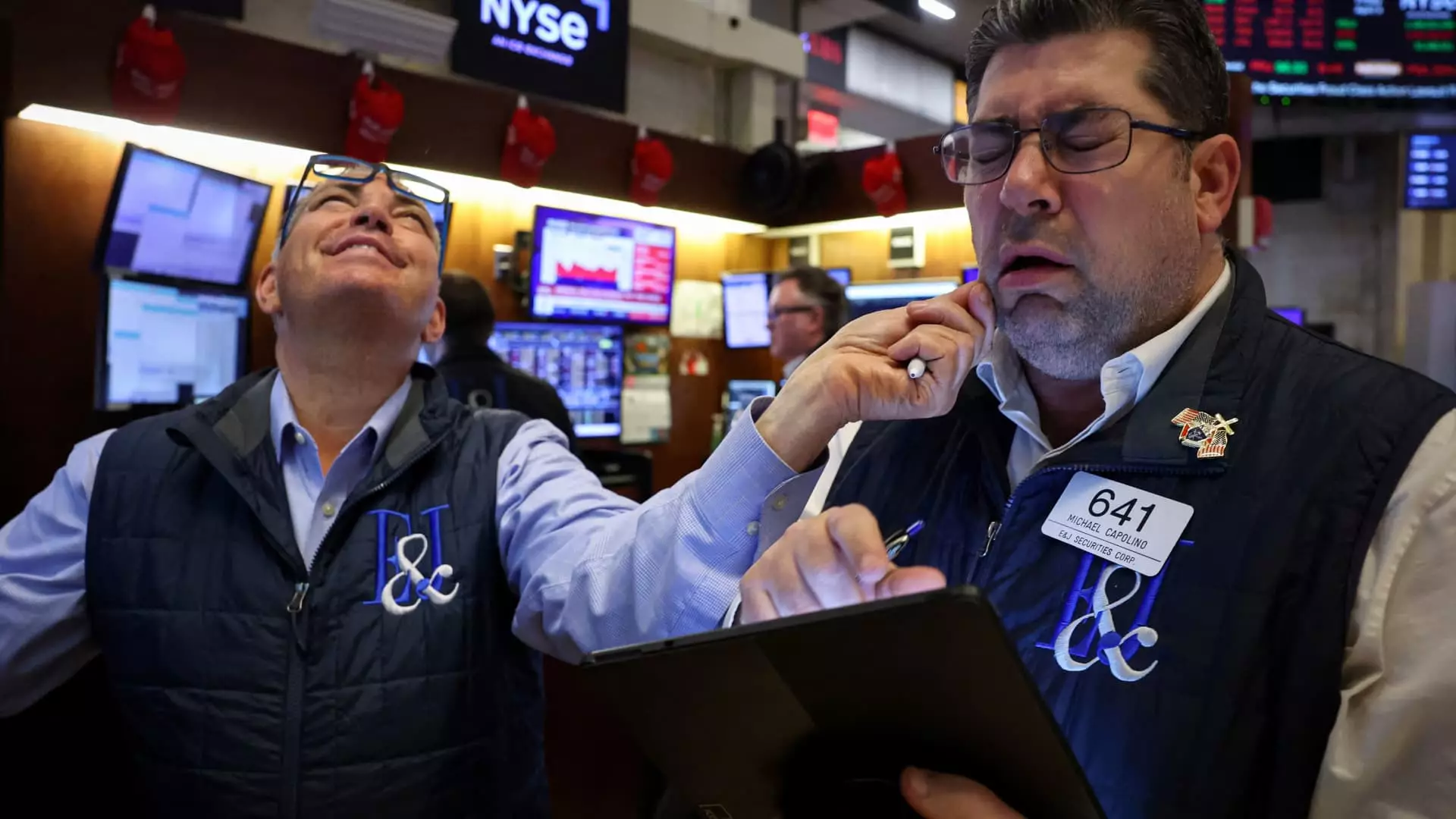In a shocking turn of events, President Donald Trump’s recent announcement of sweeping tariffs has sent shockwaves through both the markets and the global economic landscape. Initially viewed as a manageable dilemma, the prospect of aggressive tariffs evolved into a crisis that transcended even the most pessimistic expectations. As Trump gleefully declared his intentions to “pry open foreign markets,” the underlying ambiguity of his strategy was unveiled, highlighting a disconnect between grand proclamations and economic realities.
With the U.S. poised to impose a staggering 10% tariff on every trading partner, an effective tariff rate anticipated to leap from a mere 2.5% to over 20% has sent investors into a frenzy. Such a dramatic escalation has not been seen since 1910 and is reminiscent of the infamous Smoot-Hawley tariffs that many believe contributed to the onset of the Great Depression. In essence, this move underscores Trump’s commitment to an ultra-nationalist economic agenda—one that eschews global cooperation in favor of a maximalist approach that disregards the complexities of international trade dynamics.
The Unraveling of Free Trade
At the heart of this tariff strategy lies an astonishingly simplistic mathematical formula: divide the trade deficit by the value of U.S. exports to each trading partner. The result is a series of “reciprocal” tariffs that only serve to disproportionately harm countries with whom the U.S. has large trade deficits, ignoring the more nuanced realities of trade relationships. Experts have been quick to criticize this rudimentary bottom line, observing that it may punish nations simply because they import more than they export, rather than taking into account the broader trade barriers that exist.
The fallout from this decision has been swift, as both domestic and international markets recoiled in horror. The immediate sell-off erased trillions in market value, leaving investors grappling with uncertainty in their calculations of future earnings—an especially troubling predicament given the precarious nature of consumer spending in the U.S., which represents a significant portion of economic activity. In their collective panic, markets exhibited reflections of a bear mentality, with pockets of clarity disappearing faster than they arrived.
Retaliation and Geopolitical Fallout
If the goal behind Trump’s tariffs was to initiate a series of negotiations aimed at reducing barriers and ultimately revitalizing U.S. manufacturing, the ensuing chaos has contradicted this objective. Rather than achieving better trade agreements, the immediate response from major trading partners has been one of retaliation—China implemented a staggering 34% tariff on U.S. goods, while the European Union and neighboring countries like Canada and Mexico are left scrambling to mitigate the fallout from a market increasingly hostile to bilateral agreements.
The U.S.’s alienation of its trading partners creates a precarious geopolitical environment that threatens longstanding alliances. Once-stalwart relationships with Canada and Mexico are now complicated by unresolved issues stemming from the United States-Mexico-Canada Agreement (USMCA). This fracturing of trust only complicates future negotiations and further exacerbates the risk of an enduring trade war that could have long-lasting repercussions on the U.S. economy.
Economic Predictions Gone Awry
Economic analysts are bracing for the impact of these tariffs, unearthing dire predictions about inflation and growth stagnation. The Federal Reserve, facing increasing pressure, reaffirmed that these tariffs would exacerbate growth challenges while significantly boosting inflation—effectively dashing hopes that the central bank could provide a much-needed cushion for the beleaguered market. This turn of events raises alarm bells for those predicting a recession, leading many to view Trump’s tactics as detrimental to the economic landscape rather than a solution.
As the markets continue to wrestle with this unfolding crisis, it is essential to understand that the maestro conducting this symphony of discord is not heeding the warnings of experts. Trump’s resolute stance in claiming his “policies will never change” is driving fear among investors and analysts alike, signaling potential long-term implications for economic recovery.
Despite a chorus of voices within the economic community denouncing these strategies as the “biggest policy mistake in 95 years,” the relentless boldness of this administration may ironically serve to insulate it from criticism. While this might play well to Trump’s base, the adverse effects on the broader economy may paint a picture of impending turmoil—a stark reality that all should take heed of as the ramifications of protectionist policies unfold.


Leave a Reply